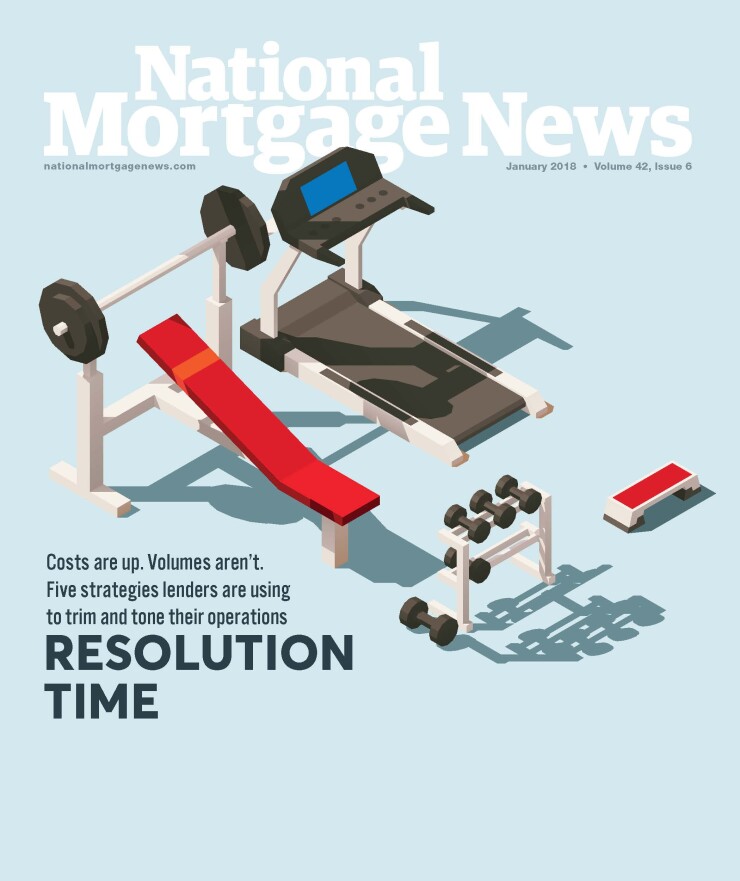
Editor's Note: This is part four of a five-part series on the strategies lenders are using to make their operations more efficient and profitable. Read
Warehouse lines of credit are getting more expensive as short-term interest rates rise, and lenders have limited options for reducing their costs.
The average cost of funding a mortgage with a warehouse line is $515 per loan, and with short-term rates rising, it's a cost that's not likely to abate any time soon.

Even with short-term rates remaining relatively stable in previous years, warehouse line costs have largely risen since the end of 2013, when they averaged $495 per loan, according to Richey May. Costs got as low as $442 per loan at the end of 2014, but the expense started rising again, to $473 in 2015 and $506 in 2016.
The potential for savings now is not huge, but "there are nickels and dimes to be earned if you are more effectively managing your warehouse lines," said Tyler House, manager of advisory services at Richey May. "We tell people just be sure you're using your most cost-effective warehouse lines first, filling those up to capacity before you use your others."
Another potential area for savings is
"If you don't need as large of a line, you don't need as much capital in the company to make sure you meet the minimum requirements necessary."
— Joe Lathrop, senior vice president, Flagstar Bank
A warehouse line can turn faster if a mortgage lender is willing to use e-notes, and that may help lenders control capital costs as volumes shrink.
The more a lender keeps outstanding on a warehouse line, the more capital the line calls for. So if a lender can reduce the amount outstanding by paying off a line more quickly with e-notes, less capital is required.
"If you don't need as large of a line, you don't need as much capital in the company to make sure you meet the minimum requirements necessary," said Lathrop.
Lenders do have to invest upfront in e-note technology to take advantage of the savings, so "each company has to look at their own cost structure to determine the kind of savings that they are going to receive," Lathrop said.

"They would have to contact a vendor and do their due diligence on the vendor to make sure that they can handle e notes successfully and make sure that they have the platform necessary," he said. "There also is testing that needs to be done with MERS, Fannie and Freddie once you have your e-vault."
How many warehouse lenders will be accepting e-notes also remains to be seen. Flagstar's warehouse lending unit geared up just recently to accept e-notes and is still unsure how many mortgage lenders will respond to the offer.
"We want to make sure our customers have it available so that when they decide to use e-notes, they will see we are a warehouse lender they can turn to," Lathrop said.





